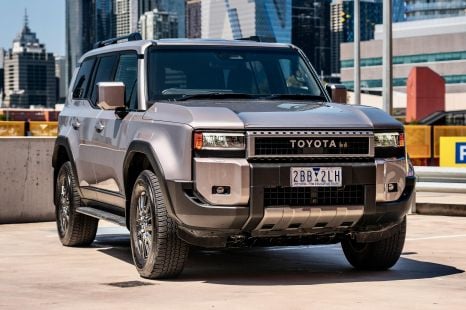

Max Davies
2025 Toyota Prado GXL review
2 Months Ago
With V6 diesel torque and class-leading tech, the Ford Everest Platinum lines up well against the ubiquitous Toyota Prado VX.



Quickly see how this car stacks up against its competition. Select any benchmark to see more details.
Where expert car reviews meet expert car buying – CarExpert gives you trusted advice, personalised service and real savings on your next new car.
The new-generation Ford Everest, designed and engineered here in Australia like its predecessor, is aimed squarely at the Toyota Prado and Isuzu MU-X.
Based on the same body-on-frame architecture as the Ranger but with coil rear suspension, it’s required to blend family-friendliness with rough-road and towing ability.
The new top-of-the-range Everest Platinum we’re testing here adds a veneer of luxury to the equation, for those who don’t want to go without all the frills.

Ford’s new flagship 4×4 has some design similarities with its predecessor but offers a bluffer front end with C-shaped daytime running lights, which make a bolder impression.
With more modern interior displays, a long list of driver-assist features, and a new V6 diesel engine with permanent 4WD, there’s plenty to discuss.
Note: The 2023.5 model year Everest Platinum revealed after we drove this car had some very small tweaks, namely new steel underbody protection and a black painted roof.
Be sure to watch our detailed video of this very car below, including on- and off-road performance testing and a full interior breakdown.
The Everest Platinum V6 4×4 costs $77,530 before on-road costs, which according to Ford’s website equals just under $85,000 drive-away using a Melbourne postcode.
This lines it up with a Toyota Prado VX at $76,348 before on-roads, equal to a smidgen under $84,000 drive-away using a Melbourne postcode. A Prado Kakadu costs about $95,000 drive-away.
For those who want a capable 4×4 workhorse with some luxury features but on a tighter budget, the flagship Isuzu MU-X LS-T is $65,990 drive-away and the Mitsubishi Pajero Sport GSR is $64,490 drive-away.
Neither the Isuzu or Mitsubishi are as impressive, but $20,000 is a big saving…
Another option worth considering is the V8 petrol-powered Nissan Patrol, which is a thirstier beast but runs on cheaper fuel (based on current prices). The Ti model is $89,600 drive-away.

2023 Ford Everest pricing (RRP):
All prices include luxury car tax, if applicable, but exclude on-road costs.
Before moving on, we need to talk about wait times. Ford Australia says demand for the Platinum has been “extraordinary”, and greater than supply can cater for at present.
“If you place an order today, your vehicle may not arrive until approximately May 2023,” the company says. Of course, it’s not like Toyota, Isuzu and Mitsubishi don’t have their own stock issues…

This is a big car, but the A-pillar grab handle and side steps make it easy enough to climb into for shorter people. Those quilted leather seats with contrast stitching feel hard-wearing and offer good thigh and side bolstering, and are both heated and ventilated.
The doors are trimmed in leather-like material offset by white stitchwork and wood inserts. The interior door handles are an interesting design, fitted inside the padded armrest and operated with a kind of squeezing motion.
Unlike the old Everest, the leather-wrapped and heated steering wheel offers reach adjustment as well as height adjustment. The starter button is mounted to the right-hand side of the steering column, under the indicator stalk, and above a dial and switch bank for the lights.
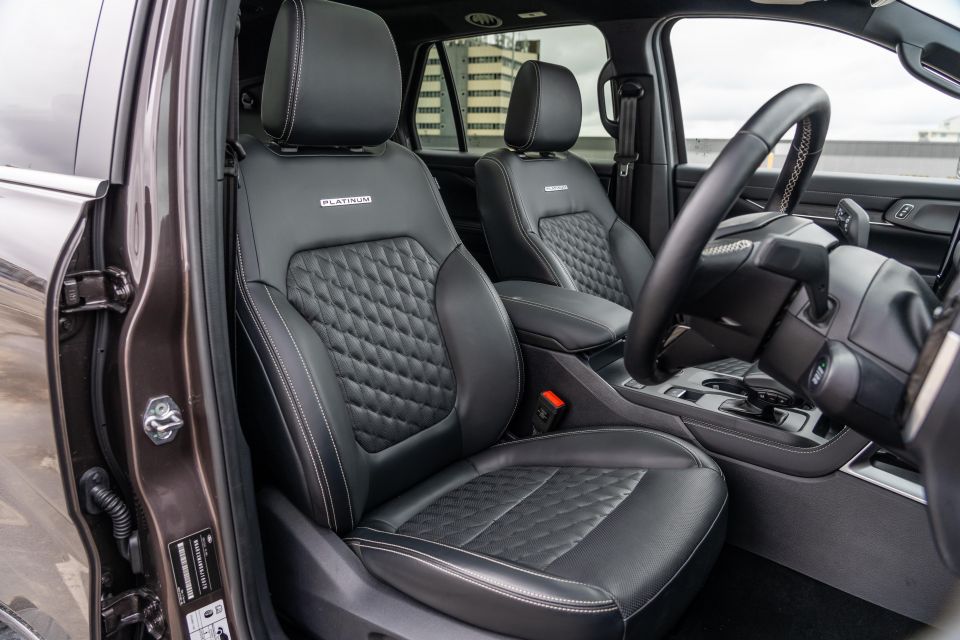

The big digital cluster behind this wheel shows detailed animations that change each time you choose a driving mode, and can display menus for lane assist and adaptive cruise control functions, trip data, off-road pitch and roll angles, trailer-specific fuel use, navigation instructions, speed limit signage, and oil/water temperatures.
Of course, there’s also a tachometer on the left and speedometer on the right, both more legible than the old Everest’s tacky cluster was.
The right spoke on the steering wheel has buttons to cycle through various cluster menus and to skip tracks, while on the left-hand side are audio volume and cruise control switches.
Behind the wheel on the left-hand side is a neat integrated trailer-brake controller with gain adjustments.

Cast your eyes to the left and you’re presented with a 12-inch portrait touchscreen that looks particularly great when displaying the starting sequence, detailed live maps, three-quarter screen Apple CarPlay, or 360 camera view with 4×4 driveline diagrams.
To access the home multimedia menu you press a spot along the upper horizontal toolbar, while the animated Everest front-end in the upper-right-hand side takes you straight to vehicle settings.
There’s a lower touch section for ventilation settings, augmented by buttons.
Once up and running the screen responds well to pinches, swipes and taps like a phone, but its load times could be quicker, with some occasional lagging of functions not pre-loaded.




The Everest Platinum is the only variant to get the flagship sound system, a 12-speaker setup supplied by Bang & Olufsen, which is enhanced by the car’s good sound deadening.
Below the screen is a wireless charging pad under both USB-A and USB-C plugs. The shift-by-wire gear stick takes a minute to adjust to, but it’s better than the in-vogue circular dials we’re seeing everywhere, and behind this sits an electric park brake switch.
The large rotary dial behind the transmission tunnel’s cup holders lets you choose between 4×4 Auto (4A) for roads, fixed 4×4 High (4H), rear-wheel drive (2H), and low-range (4L). The ring around it spins to let you cycle through terrain modes that adjust the accelerator response and traction controls to suit take-off over specific surfaces.
Additional storage options include two gloveboxes, a smallish centre console, a sunglasses holder in the roof, pop-out cup holders on the upper dash’s outermost edges, and bottle-sized door bins.



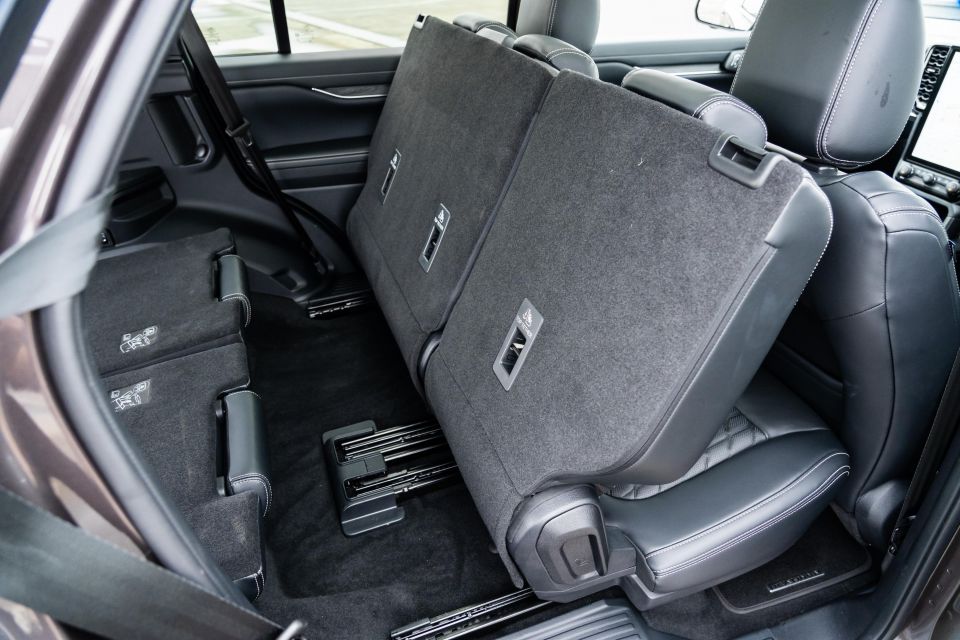
The middle-row seats come with plenty of legroom for adults and a respectable 1443mm of shoulder room, but that huge glass sunroof – for all its airy appeal – seemingly impinges on headroom for taller folk.
I’m 194cm and my head was hitting the roofline to an uncomfortable degree in this test car, although my colleague Paul in his video embedded above had acceptable space.
The seat bases are angled backwards and the backrests recline, while amenities include vents and reading lights in the roof (roof vents are better than vents mounted behind the console), map pockets, a flip-down centre armrest with cupholders, USB-A and USB-C points, temperature controls, and even heated outboard seat bases.
The backrests slide and tilt/tumble on a 60:40 basis, with the larger portion sensibly on the left-hand side to allow easier access to the third row seats. The entry aperture and rear headroom is mostly kid-friendly, but our video tester Paul did fit in the third row too. There are third-row vents and cupholders too.


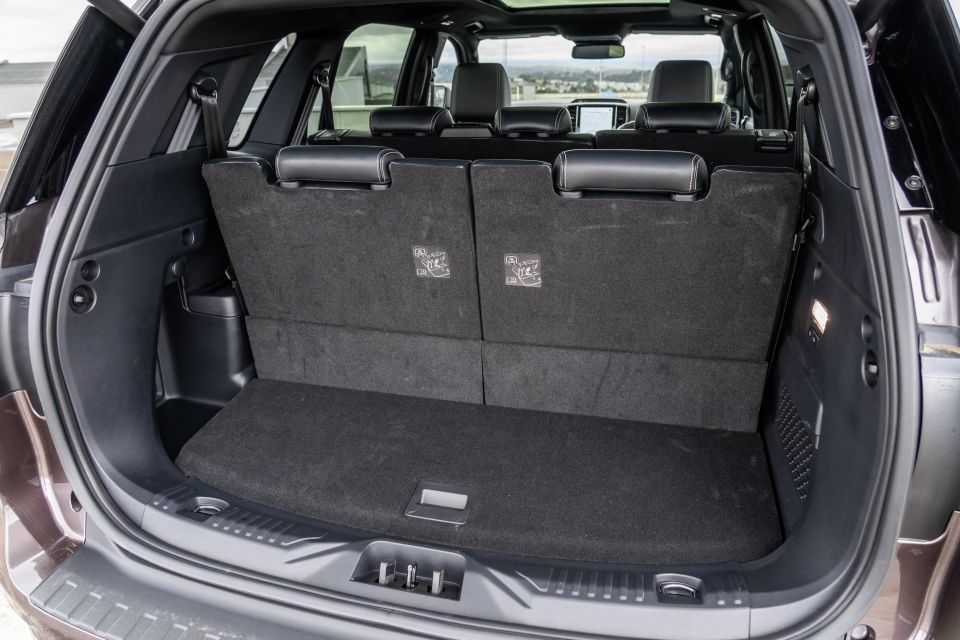

When not in use, the sixth and seventh seats fold flat into the floor, and this being the Platinum grade they do so electrically through buttons in the boot area – matching the powered tailgate.
Even with the third-row in use there’s space for a few bags, but the boot in five-seat mode is obviously far more capacious;. climbing from 259 litres to 898L, expanding further to 1818L in two-seater mode
There’s a plastic storage tub below the loading floor, and tools to change the wheel – which itself is mounted underneath the vehicle.
Ford Everest dimensions:

The standard engine in the Platinum is Ford’s newly adapted V6 – a version of which previously saw service in the giant F-150 Stateside.
The 3.0-litre turbo-diesel makes 184kW peak power at 3250rpm and a potent 600Nm of peak torque between 1750 and 2250rpm. That’s noticeably more than any rival mentioned can muster, with the Prado’s 150kW and 500Nm 2.8-litre four-cylinder diesel coming closest.
The Ford V6 is mated to a 10-speed automatic transmission and a full-time 4WD system with low-range gearing.
The claimed combined-cycle fuel economy is 8.5 litres per 100km, and the tank can store 80L. The Everest is rated to tow a 3500kg braked trailer.

Ford Everest Platinum tech specs:
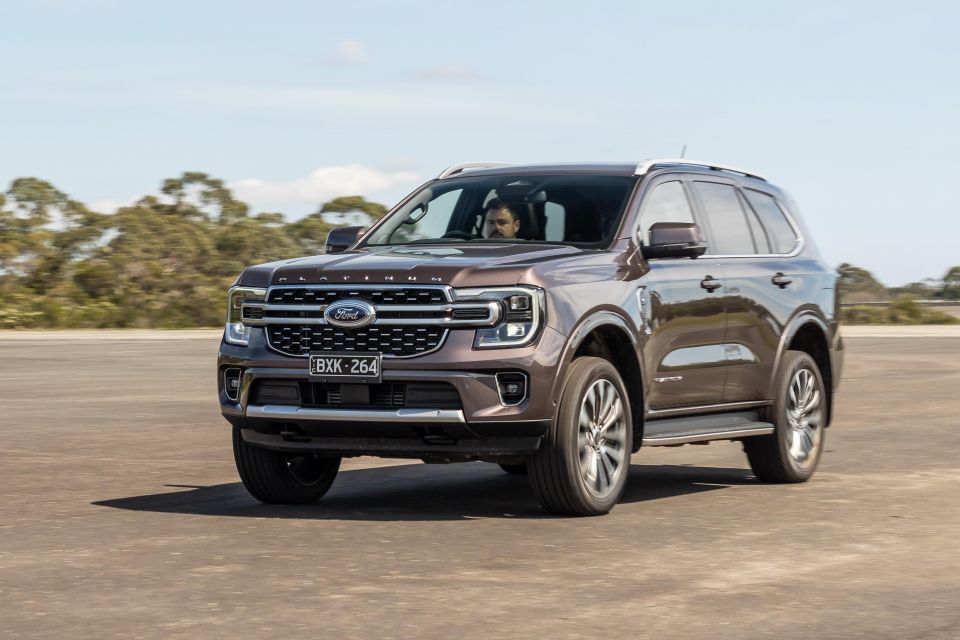
The V6 engine is definitely the pick over the base models’ 154kW and 500Nm 2.0-litre Bi-Turbo four, given the Everest’s porky 2.5-tonne kerb weight.
It’s refined at idle and smooth under throttle, benefitting from quick shifts and closely stacked ratios in the 10-speed auto, which drops back rapidly when you need a response.
You might save a bit of diesel if you drive in 2H, but I’d probably keep it in 4A (full-time 4WD) mode and let the car’s brain determined where to send engine torque, based on sensor input.
We failed to match the fuel economy claim, averaging 10.9 litres per 100km over about 400km of driving, most of which was at highway speed. At this rate we’d have about 700km of range.

Our V-Box captured a 9.0-second zero to 100km/h time, which is brisk without being rapid, while the 80-120km/h overtaking test took 6.7 seconds regardless of drive mode.
The Aussie-developed Everest soaks up pockmarked roads even on 21-inch wheels and lowish-profile highway tyres, while the body is kept well controlled in corners and undulations – yes there’s some roll, but it’s controllable and predictable.
At 100km/h on rural highways and even ungraded gravel it’s possible to have a conversation between rows one and two without straining or raising your voice, and from the front seats it’s clear how much effort has gone into keeping wind and tyre roar at bay.
The electric power steering is typically light and feel-free, but saves your arms a workout.

Where expert car reviews meet expert car buying – CarExpert gives you trusted advice, personalised service and real savings on your next new car.
Ford’s driver-assist features all worked well, including the lane-centring and adaptive cruise control, and while side windows are large and thereby help visibility the blind-spot monitoring system is always handy to have.
The 360-degree cameras really help when parking, with an overhead view ideal for hitching up a trailer – made easier again by the neatly integrated brake controller module. You can also do your full trailer light sequence check remotely through the FordPass app.
Off the beaten path, it’s really the tyres that let the Everest down, however Ford commendably offers to swap them for 18-inch all-terrain rubber on smaller alloys for no cost.
As well as the different driveline settings and traction modes, there’s a locking rear diff and one of the smoothest hill-descent controls we’ve tried to date. With ARB accessories sold at dealers, you can kit out your Everest for 4×4-ing with absolute ease.




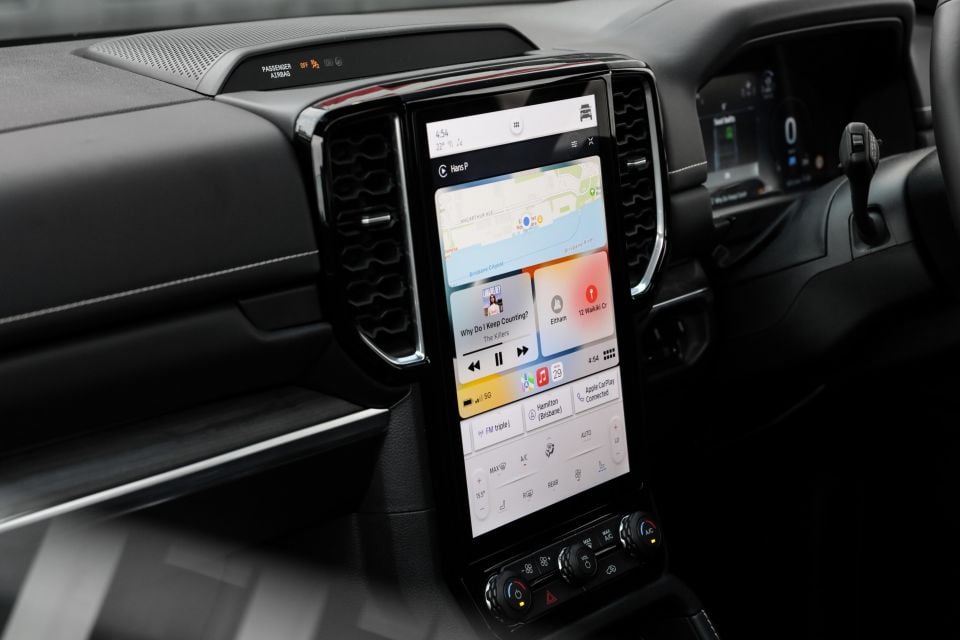
You don’t miss much, this being the flagship Platinum variant.
Outside
Inside



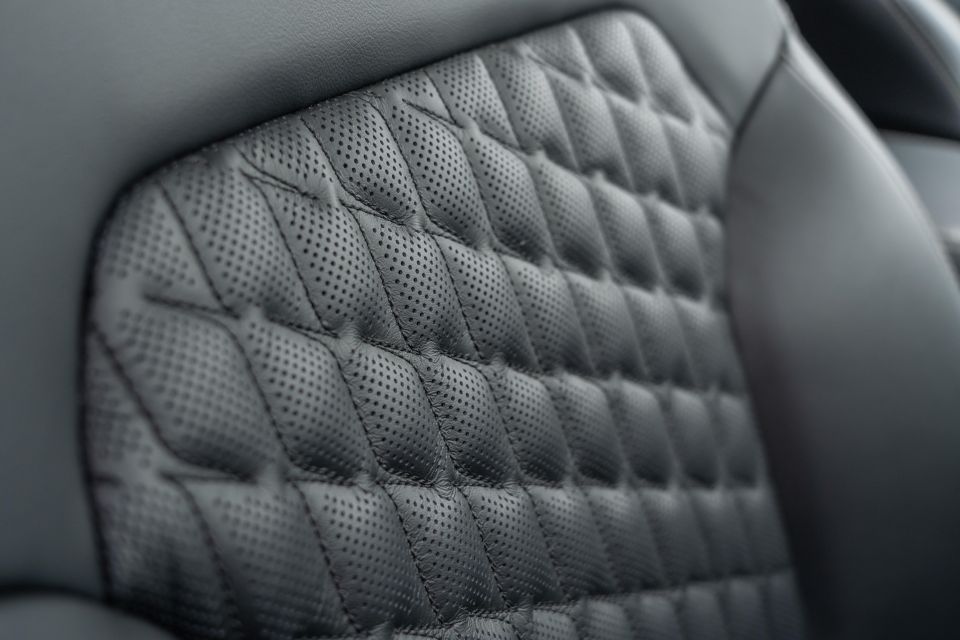
Tech
Options
For a full rundown of what features come in each variant, read our price and specs story here.

Ford sealers will happily sell you myriad accessories, including many made by ARB under a venture between the two companies. Options include:

Good news for family buyers, the Everest comes with the most up-to-date 2022 five-star ANCAP safety rating, just like its Ranger sibling.
ANCAP awarded the new Everest 86 per cent for adult occupant protection, 93 per cent for child occupant protection, 74 per cent for vulnerable road user protection, and 86 per cent for safety assist features.
Safety features include

Ford Australia provides a five-year, unlimited kilometre warranty plus roadside assist with capped-price servicing at 12 month or 15,000km intervals. Ford also has a service loan car program.
Basic service prices:
The Everest’s Intelligent Oil Life Monitoring System measures the performance of your engine oil and alerts you in the instrument cluster or FordPass App when it needs changing. The same app also displays other vehicle status and health alerts.

Is the Everest Platinum the most affordable option out there? No, but you do get what you pay for here – just like the Ranger, it really feels like the class-leader.
This is a serious bit of kit; with great performance, Australian-honed dynamic prowess for the most part, class-leading interior technologies, and great design that really stands out.
For those after a large 4WD with all the mod-cons, capable of comfy suburban errands as well overland adventures and towing, it’s hard to look past. Reputation aside, it makes the Toyota Prado feel very dated indeed.
The only real decision is do you save some cash, forgo a few luxury add-ons, and get the mechanically-identical Everest Sport instead?
That’s your call – I reckon I would, or alternatively would buy the Platinum but with the no-cost-option all-terrain rubber.
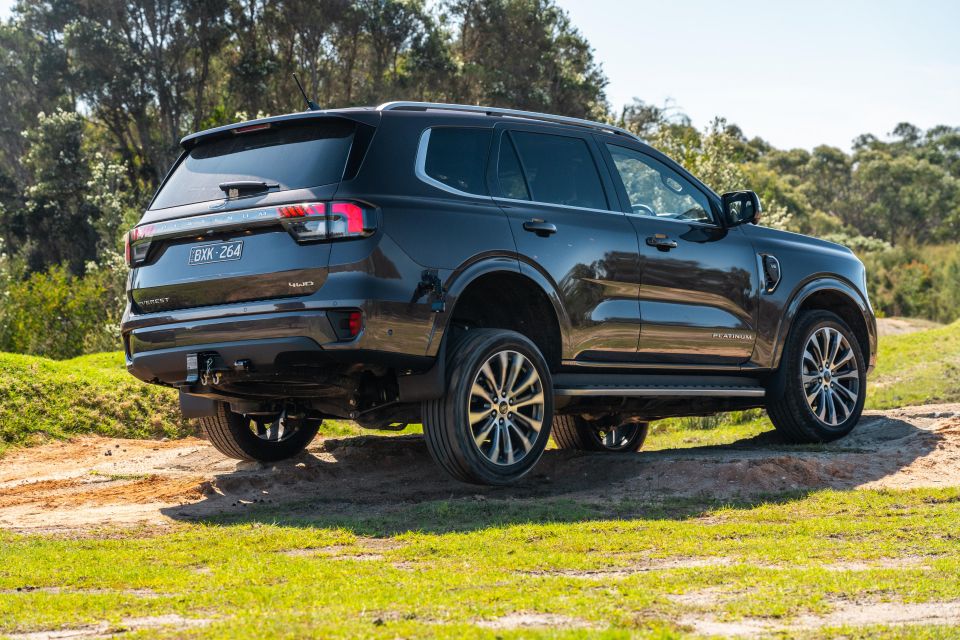
Click the images for the full gallery
MORE: Everything Ford Everest
Where expert car reviews meet expert car buying – CarExpert gives you trusted advice, personalised service and real savings on your next new car.


Max Davies
2 Months Ago


Matt Campbell
2 Months Ago


William Stopford
2 Months Ago
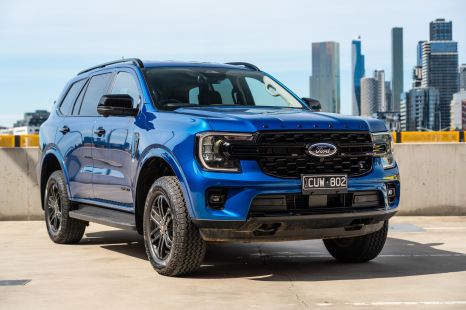

Josh Nevett
2 Months Ago


Max Davies
1 Month Ago


CarExpert.com.au
22 Days Ago